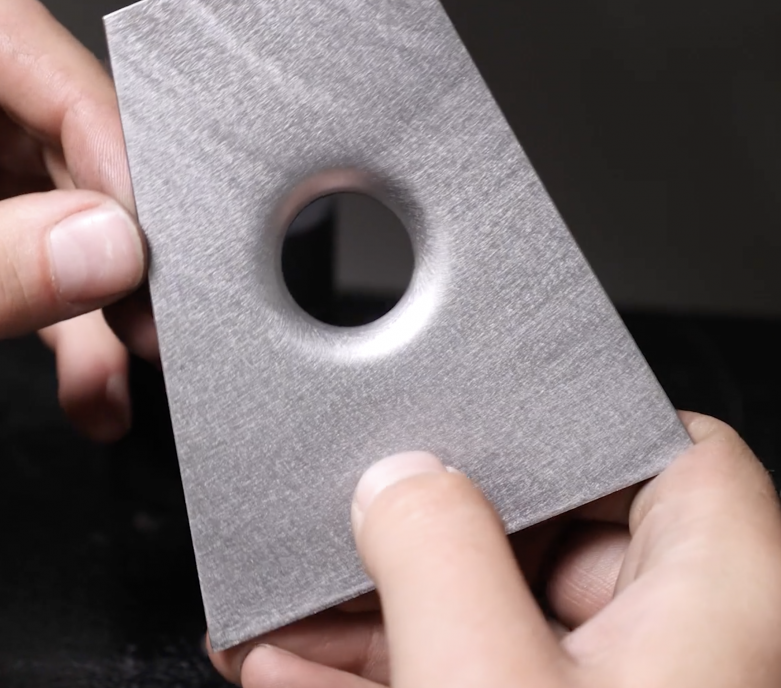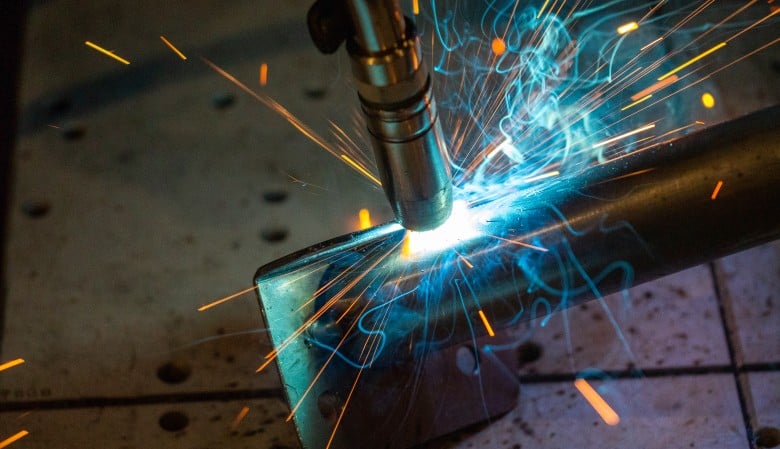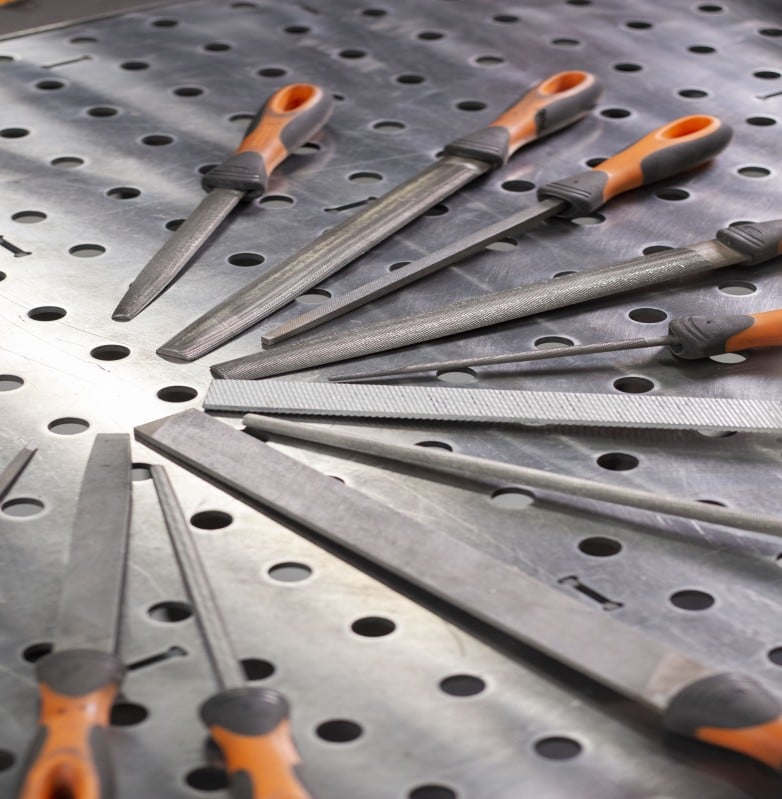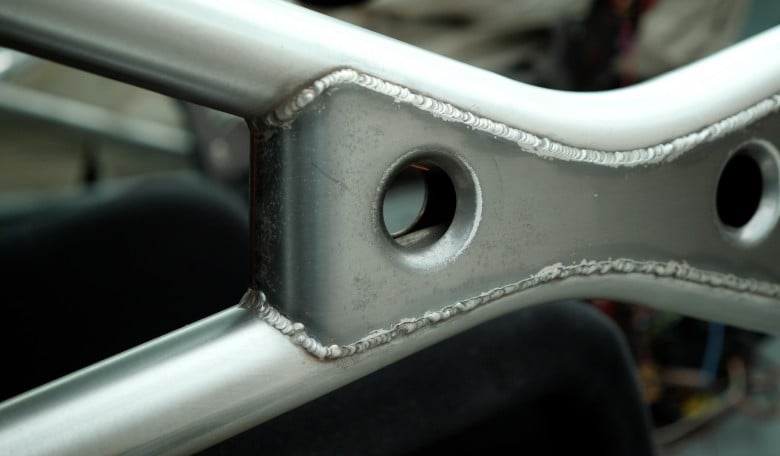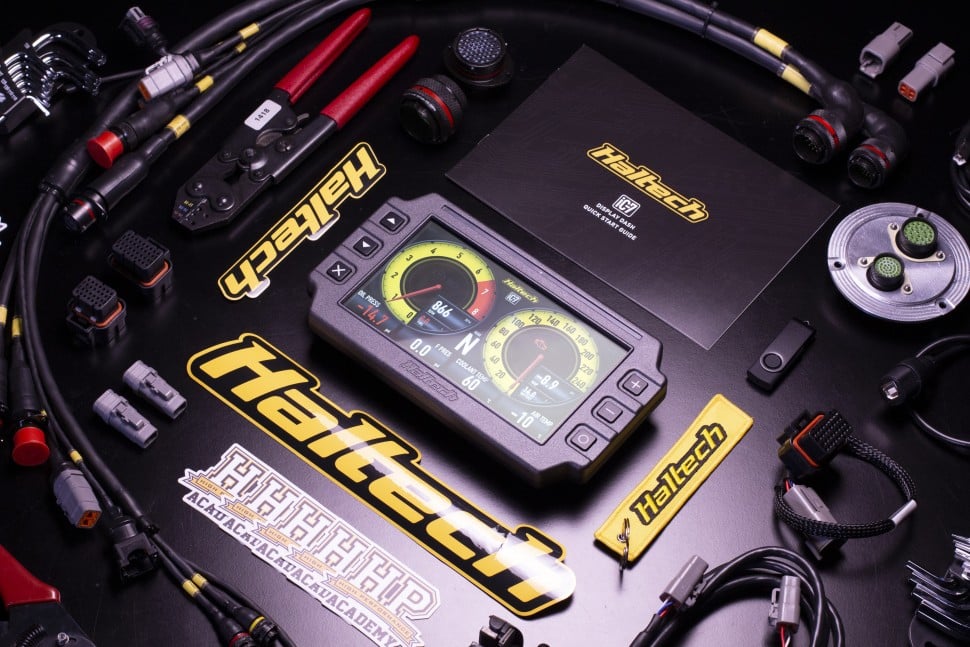When it comes to motorsport fabrication, choosing the right materials for critical components like roll cages, suspension parts, and chassis reinforcements is essential. Two popular options are Chromoly (short for chromium-molybdenum steel) and Mild Steel. Both have unique advantages and trade-offs that can significantly impact a vehicle's performance, weight, and safety. Let's break down these differences to help you decide which material best suits your project.
In this article: Strength & Weight | Fabrication and Weldability | Cost Considerations | Durability and Fatigue Resistance | Which One Should You Choose? | Conclusion
Strength and Weight
Chromoly is known for its high strength-to-weight ratio, making it a popular choice in motorsport fabrication. The most commonly used grade is 4130 Chromoly, which combines chromium and molybdenum alloying elements with around 0.3% carbon content. This gives it much higher tensile strength than mild steel while keeping the density nearly the same. As a result, thinner-wall 4130 tubing can be used to match the strength of thicker mild steel, reducing overall weight. For example, a full roll cage built from 4130 Chromoly can weigh up to 12 kilograms less than one made from 1020 mild steel, depending on the design. That kind of reduction makes a real difference in performance applications where every kilogram counts.
It's worth mentioning that chromoly is available in many different grades, ranging from 4118 to 4161, with varying amounts of carbon in each. 4150 chromoly, for example, is a steel commonly used by the military for aircraft parts and rifle components. In SAE grades, the last two digits indicate carbon content, so 4130 has 0.3% and 4150 has 0.5%.
By contrast, 1020 mild steel, a common low-carbon steel with about 0.2% carbon, has lower strength and typically requires thicker walls to achieve the same structural integrity. That added thickness brings extra weight, which can affect acceleration, handling, and efficiency. Still, in situations where weight is less critical, 1020 offers solid durability and ease of use comes at a lower cost.
Fabrication and Weldability
One area where mild steel has a clear advantage is ease of fabrication. It is softer, easier to cut, bend, and shape, and it welds with less precision required. We won't use MIG welding settings as an example they are far simpler, but for TIG welding, mild steel like 1020 is forgiving with setup. Typical parameters include 40 amps per millimetre, ER70S-2 or ER70S-6 filler rod, and 100 percent argon shielding gas flowing at around 8 LPM. It can also handle wider variations in arc length and post-flow timing without risking weld integrity.
4130 chromoly, on the other hand, requires more attention to detail. The heat-affected zone is more sensitive, and if overheated or poorly welded, it can become brittle and prone to cracking. For that reason, chromoly is best welded with TIG using ER70S-2 or ER80S-D2 filler, tighter fit-ups, and lower heat input. Welders typically use similar amperage but may reduce post-flow and arc length, and use features like pulse settings and controlled slope-in and slope-out to manage heat more precisely. TIG setups for chromoly also benefit from size 8 to 12 gas lenses and sharpened 2.4 mm tungsten electrodes.
Because of its forgiving nature, mild steel is more beginner friendly and less costly to work with, making it a good starting point for new fabricators to hone their skills. Chromoly, while offering better performance potential, demands more experience and attention to detail. Some motorsport governing bodies will only allow welders who have been approved to weld chromoly-based safety structures. Your chosen class of racing will have a rule book that clearly tells you if this is the case for you or not.
Cost Considerations
Mild steel is more budget-friendly than Chromoly. The higher cost of Chromoly comes from its alloying elements and the additional labour time and skill required during fabrication. For grassroots racers or those working to a tight budget, mild steel is often the go-to choice.
For professional builds where performance and weight reduction are critical, the investment in Chromoly can be worthwhile, but it’s important to weigh that cost against your performance goals and resources.
Durability and Fatigue Resistance
One key factor in motorsport is how materials handle stress over time. Chromoly’s higher tensile strength gives it better fatigue resistance, allowing it to withstand many more stress cycles before failure. This can be a significant safety advantage for high-stress components like roll cages, suspension arms, and chassis bracing.
Mild steel has lower fatigue strength, but in applications that aren’t subject to high cyclic loading, it can still perform well and have a long service life.
Which One Should You Choose?
Chromoly is often the material of choice when strength and weight are critical, and the budget allows. It’s ideal for professional or high-performance builds where durability and weight savings matter. Mild steel, however, is a practical and cost-effective option for hobbyists or budget-conscious builders, offering solid performance and an easier fabrication experience.
It’s also worth noting that some motorsport rulebooks require mild steel for certain classes, as it tends to bend rather than crack in an impact, making post-crash inspection easier along with making the classes cheaper to compete in.
Of course, other classes of racing, typically those with faster cars and more demanding safety requirements, will instead demand the use of chromoly, and again the class-specific rulebook will have that required information.
Safety structure design is also done with the specific material of choice in mind, and you should never use mild steel for a safety structure that specifies chromoly, even if you don't plan to race the car competitively/have it signed off.
Conclusion
Whether you're building a roll cage, suspension components, or other critical parts, both Chromoly and Mild Steel have their places in motorsport fabrication. Understanding your vehicle's demands and your fabrication skill level can help you make the best choice, balancing performance, cost, and ease of work. For those new to fabrication, starting with Mild Steel can be a smart approach before moving on to Chromoly as your experience and project demands grow and both the Motorsport Fabrication Fundamentals and Practical TIG Welding courses are going to help you learn what to do with your chosen material, beyond just knowing what you should use. Enrol instantly, lifetime access.

